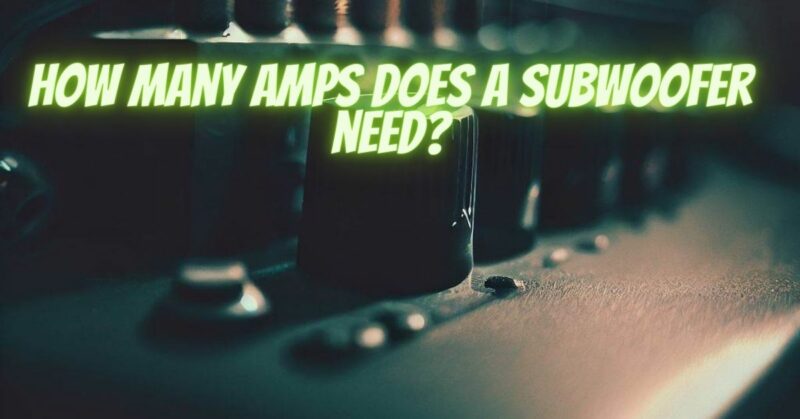Subwoofers are the heartbeat of an audio system, delivering the deep and resonant bass frequencies that add depth and impact to music, movies, and more. When setting up a subwoofer, a common question emerges: How many amps does a subwoofer need? This query delves into the world of subwoofer amplification, exploring the factors that influence the power requirements for a subwoofer and guiding you in determining the amps needed to achieve optimal performance.
Understanding Subwoofer Amplification
Subwoofer amplification involves providing adequate power to the subwoofer to reproduce low-frequency sound accurately and with impact. Amplifiers, often referred to as amps, play a critical role in driving subwoofers by supplying the electrical current needed to move the subwoofer’s speaker cone.
Factors Influencing Amps Needed for Subwoofers
- Subwoofer Sensitivity: Sensitivity measures how efficiently a subwoofer converts electrical power into sound. Subwoofers with higher sensitivity ratings require less power to produce the same volume level as subwoofers with lower sensitivity ratings.
- Room Size and Acoustics: The size of the room and its acoustic properties affect the perceived loudness and impact of the subwoofer. Larger rooms might require more power to create the desired bass effect.
- Desired Volume Level: Your intended volume level greatly influences the amps needed for your subwoofer. Higher volume levels demand more power from the amplifier.
- Music Genre and Content: Different types of music and content have varying levels of bass content. Bass-heavy music genres or movies with intense low-frequency effects might require more power to reproduce accurately.
Calculating Amps Needed for Your Subwoofer
To determine the amps needed for your subwoofer, follow these steps:
- Identify Sensitivity Rating: Check your subwoofer’s sensitivity rating, which is often provided in decibels (dB) at a specific distance with a given input power. Higher sensitivity ratings require less power.
- Determine Desired Volume Level: Decide on the volume level you want to achieve. This will be the reference point for calculating power requirements.
- Use the Sensitivity Formula: Use the sensitivity formula to calculate the power required. The formula is:
Power (Watts) = 10^(dB/10) * (10^(dB/10)) / Sensitivity (dB) - Select a Suitable Amplifier: Choose an amplifier that provides the calculated power output. It’s advisable to choose an amplifier that offers slightly more power than calculated to ensure headroom and prevent distortion.
Considerations When Choosing an Amplifier
- Matching Subwoofer Impedance: Ensure the amplifier’s impedance matches the subwoofer’s impedance to ensure compatibility and optimal performance.
- Amplifier Features: Look for amplifiers that offer features like adjustable crossover frequencies, phase control, and EQ settings to fine-tune the subwoofer’s performance.
- Subwoofer Type: Different subwoofer types (ported, sealed, bandpass) have varying power requirements. Choose an amplifier that aligns with your subwoofer’s design.
The amps needed for a subwoofer depend on factors such as subwoofer sensitivity, room size, desired volume level, and content type. By calculating the required power using the subwoofer’s sensitivity rating and desired volume level, you can choose an amplifier that delivers the necessary power to drive your subwoofer with precision and impact. With the right power supply, your subwoofer will be primed to produce the deep and resonant bass that elevates your audio experience to new depths.


